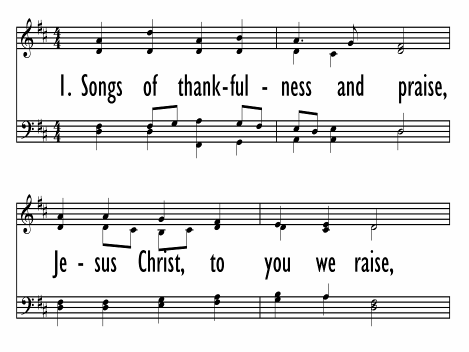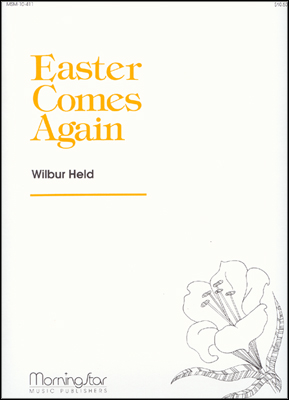- |
User Links
God, You Call Us to This Place
Hymn Information
- First Line
- God, you call us to this place
- Author
- Delores Dufner, b. 1939
- Tune Name
- SALZBURG
- Composer
- Jakob Hintze, 1622-1702
- Harmonizer
- Johann S. Bach, 1685-1750 (alt.)
- Topic
- Unity and Fellowship · Elements of Worship: Opening of Worship: Called And Gathered · Elements of Worship: Baptism
Copyright Information
- Text Copyright
- © 1993 The Sisters of St. Benedict, admin. OCP Publications
- Tune Copyright
- Public Domain
- Reprint/Projection Information
- Words: Permitted with a license from LicenSingOnline.org. If you do not own this license, please report and pay for your usage at their website or contact the copyright holder for permission.
- Music: The Music is in the Public Domain; you do not need permission to project or reprint the Music.
Scripture References
- ·
Thematically related:
- st. 1 =
- st. 2 =
- st. 3 =
- st. 4 =
Further Reflections on Scripture References
John 4:23 speaks of God’s desire that we worship him (stanza 1). Ephesians 6:1-4 speaks of the unity of the church (stanza 2). Romans 6:1-10 speaks of our rebirth through water (stanza 3). And I Peter 2:9 and 10 speak of our priestly royal race (stanza 3).
Confessions and Statements of Faith References
Further Reflections on Confessions and Statements of Faith References
Our coming together is not first of all an action of our own initiative, but is of God’s initiative. He does the gathering. The Confessions are careful to use terminology that identifies God’s gathering action. Heidelberg Catechism, Lord’s Day 21, Question and Answer 54 says, “The Son of God through his Spirit and Word…gathers...” Our World Belongs to God, paragraph 30 testifies “The Spirit gathers people…into the unity of the body of Christ.” The Belhar Confession, Section 1 refers to the Trinity. “…The triune God, Father, Son and Holy Spirit…gathers, protects and cares for the church through Word and Spirit.”
We celebrate with joy that Christ has come to rescue us from sin and evil through the work of his son, Jesus Christ. Our World Belongs to God, paragraph 35 identifies the church as “the fellowship of those who confess Jesus as Lord…the bride of Christ…”
Belgic Confession, Article 21 professes how Jesus Christ is a high priest forever and provided for the cleansing of our sins; Article 10 proclaims him as the “true eternal God, the Almighty, whom we invoke, worship and serve.” Heidelberg Catechism, Lord’s Day 1, Question and Answer 2 calls us to “live and die in the joy of this comfort” and “to thank God for such deliverance.”
God calls his children from many sources, languages, nations, and from a variety of social standings and personal needs. The Confessions are very clear on this. Belgic Confession teaches in Article 27, “This holy church is not confined, bound, or limited to a certain place or certain people.” Our World Belongs to God, paragraph 30 reminds us, “The Spirit gathers people from every tongue, tribe and nation...” and in paragraph 34 teaches that “all are welcome…the homeless…the broken…the sinner…the despised…the least…and the last…”
Stanza 3 says “with the water we were born of the Spirit in the Son”; the teachings of Heidelberg Catechism, Lord’s Day 27, Question and Answer 73 tell us that the water of baptism is “the water of rebirth and the washing away of sins.”
God, You Call Us to This Place
Tune Information
- Name
- SALZBURG
- Key
- D Major
- Meter
- 7.7.7.7 D


 My Starred Hymns
My Starred Hymns







